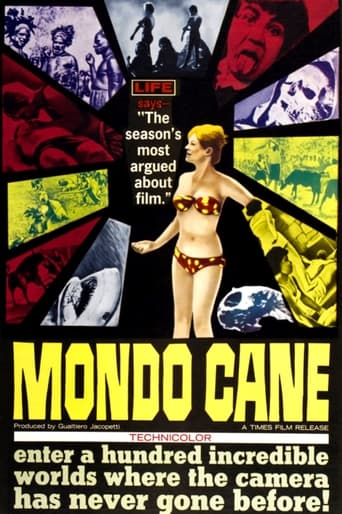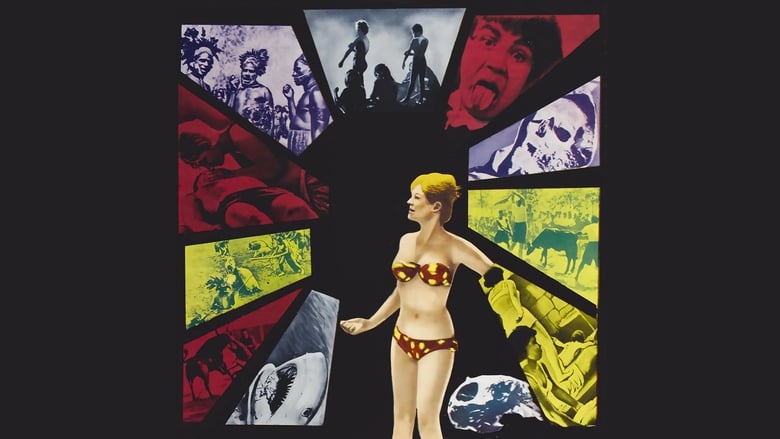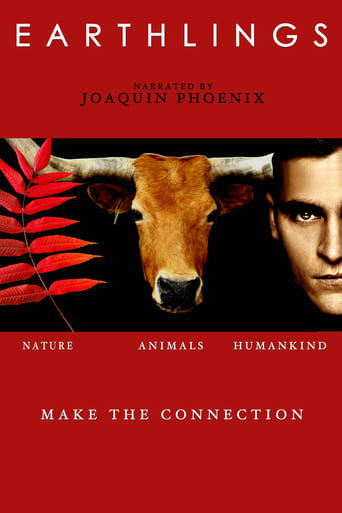Mondo Cane (1962)
A documentary consisting of a series of travelogue vignettes providing glimpses into cultural practices throughout the world intended to shock or surprise, including an insect banquet and a memorable look at a practicing South Pacific cargo cult.
Watch Trailer
Cast
Similar titles

Reviews
Very Cool!!!
Just perfect...
The performances transcend the film's tropes, grounding it in characters that feel more complete than this subgenre often produces.
The story, direction, characters, and writing/dialogue is akin to taking a tranquilizer shot to the neck, but everything else was so well done.
Now, here's a decidedly weird, wild, gross, perverse, sad, pathetic, sensational, little documentary whose vivid images clearly speak louder than any words ever could.Mondo Cane is the original, 1962 "Shockumentary" that just might be perfectly ideal for the jaded "been there/seen that" viewer of today.Though its content is definitely not suited for all tastes, it's actually quite surprising to see how well Mondo Cane (that's Italian for "Dog's World") holds up today, 52 years after its original theatrical release.With its in-your-face images and its leering, sneering narration, Mondo Cane explores eccentric behaviour, bizarre delicacies for consumption, and, yes, sexual taboos (amongst other things), amidst the barbarism of civilization gone insane.From every corner of the globe (excluding the Arabic world), Mondo Cane brings to the viewer a disturbing and controversial glimpse at this mad, mad, mad world which exists all around us.*Warning* - Mondo Cane contains graphic scenes of heartless cruelty towards animals.
"Mondo Cane" (1962) is an update of Homer (fl. c. 800 BC and Aesop (fl. c. 620 BC - 560 BC).....a warning to avoid the bad guys!---------------Throughout cultural history in almost all cultures, cultural leaders and artists of fame and importance warn audiences to think twice about people and situations which look good but which are dangerous and should be avoided.Two early examples are Greek authors Homer and Aesop, and the list at least from their times now thousands of years past is long, and extends to the present day, and into the art of current day cinema.Gualtiero Jacopetti, credited as the main creator of the documentary movie titled "Mondo Cane" (1962 Italy) is a recent example of Cassandra type artists/ cultural leader who scream out "Beware!" to the rest of us.Do most people get the point, take the advice of warning givers in the tradition of Homer, Aesop, and Jacopetti, and many, many others (some listed below)?No....but the warnings continue in an unending stream, and are a noticeable part of cultural history, worth respecting as a phenomenon, even if not agreed with or heeded, which mostly, warnings given by cultural leaders are not (which explains why so few people presently or ever during past history are cultural!).What's the big deal (the latest big deal) about Jacopetti and his "Mondo Cane" (1962) movie, eh?We see the beautiful people (mainly the beautiful bathing beauty girls of 1962's "White Australia") at the start of the movie contrasted with others from places like Borneo, Fiji, and Malaysia (rural Italy and sports enthusiast Portugal are also included).The message is clear...........most of the people and much of what some people in the world do is ugly, uncivilized, dangerous, and should be refused and avoided.This is not a "love thy neighbor" movie, and refusing "love for thy neighbor" is not a new theme historically.Homer's "Trojan Horse" story part of his Odyssey epic poem is an early example. Accepting the big horse outside the gates of Troy might seem like a good idea, but, in hindsight, we realize it would be better for the besieged Trojans to have left it where they found it, and best to destroy it where they found (outside the gates of Troy) if that had been practical.Two hundred years after Homer (fl. c. 800 BC), roughly, came Aesop (fl. c. 620 - 560 BC), also a Greek who also lived in present day Turkey (aka "Anatolia").Aesop gives us yet another "avoidance is best" story with his "Farmer and the Viper" fable of fame.For those who don't know, "The Farmer and the Viper" is one of Aesop's Fables, numbered 51 in the Perry Index. It (Aesop's Fable) has the moral that kindness to the evil will be met by betrayal and is the source of the idiom 'to nourish a viper in one's bosom'. The story concerns a farmer who finds a viper freezing in the snow. Taking pity on it, he picks it up and places it within his coat. The viper, revived by the warmth, bites his rescuer, who dies realizing that it is his own fault. In an alternative version, the farmer brings the viper home to warm by the fire. When it threatens his wife and children, he kills it with an axe. It is the latter version that appears in La Fontaine's Fables (VI.13) as Le villageois et le serpent; this ends with the detail that the farmer cuts the snake in three and the parts struggle to re-unite themselves.The "brotherhood of man" doesn't extend to vipers (Aesop's opinion) any more than it extends to Trojan Horses (Homer's opinion).Cultural history marched on into relatively recent times, and the cavalcade of writers giving us "Beware" type messages continued.Thomas Hobbes, Voltaire, the Marquis De Sade, Darwin, Spencer, Thomas Henry Huxley, William Graham Sumner, movies of the 1960's protest era including "Mondo Cane," (1962), "Marat/ Sade" (1966), and "Zabriskie Point" (1969), and more recently William O. Wilson, Harvard University's embattled "Sociobiologist" of fame, still alive, kicking, and writing (in his 80's as of 2013) "Beware" messages to us all about the problems of "Inclusionism" in the same spirit as Homer urged us to avoid (i.e. "don't include) Trojan Horses.It's up to us to choose........the Australian bathing beauty girls or the Borneo people (who take up much more of "Mondo Cane" 's screen time, so the avoidance point Jacopetti makes is all the more emphatically made......ignored though it was in the "brotherhood of man" historical period which came immediately after the 1962 release of the "Mondo Cane" movie). We are told (by some, not all) that we are "all brothers" and it's not a good (or moral) idea to avoid particular groups of people, regardless of visual and other evidence we take in. Is that true?The long train of historical (including cinematic) cultural "Cassandra's" include many who say (nay, yell loudly, as Jacopetti does in "Mondo Cane" 1962), "No, it is not true, and don't be taken in by the tidal waves of copious propaganda urging otherwise for self-interested, hidden agenda reasons (often not identified or discussed by the warning givers)."Only the wise survive......... most of the time. Be wise.........it can't hurt.-------------------------Tex (David) Allen is a SAG-AFTRA actor who has written many reviews of books and movies.Email: [email protected]
"Mondo Cane" of 1962 is the first of a bunch of Italian 'Mondo' Shockumentaries and, without any doubt, an immensely influential piece of Exploitation cinema. Gualtiero Jacopetti and Paolo Carva came up with an entirely new style of film-making with this, and back in 1962 it must have made even greater an impact on audiences, and also been more shocking than it is now. While some folks might point out that "Mondo Cane" may seem slightly dated, one must not forget that this was revolutionary and ground-breaking for its time and highly influential for many films to come. "Mondo Cane" has spawned quite a bunch of other 'Mondo' films including the sequel "Mondo Cane 2" as well as the notorious "Addio Zio Tom" (1971), and furthermore served as an influence to countless exploitation classics including masterpieces such as Ruggero Deodato's "Cannibal Holocaust" (1980). But it is not merely the film's classic status and influence that make this worth watching. "Mondo Cane" is a highly interesting, and often bizarrely ironical film as such, and everybody interested in Exploitation cinema should see it at least once."Mondo Cane" shows more or less unrelated scenes from around the world, some of which are shocking, others comical. To label the film as sensationalist may be justified to a certain point, but people who are bothered by this are probably not best advised to watch Exploitation cinema anyway. The scenes include such different things as drunk people behaving like drunk people do, or scenes in a massage parlor, the slaughtering of animals (these are real documentary shots, so Peta and pals are probably best advised not to see them), or bizarre religious rituals. While the film is a documentary it is not to 100 per cent. Inbetween real scenes there are some which are obviously fake, and several with which neither is obvious and which cold be either staged or real. Some might label the premise of "Mondo Cane" voyeuristic or sensationalist, but the film never looks down upon the depicted people, especially not tribesmen of so-called primitive cultures. Some of the scenes are actually quite funny, and make it harder to take the whole thing seriously, but then, some of them are highly interesting, some of them shocking (in a comparatively un-explicit manner), and in some parts, especially in the second half, the film becomes downright fascinating. The brilliant score by maestro Riz Ortolani adds a lot to the atmosphere and overall value of the film. "Mondo Cane" is narrated, and the voice-overs are actually quite interesting without seeming too serious for the films own good. One may look at this film in one way or another, but the least one can say is that Giacopetti and Cavara deserve great respect as pioneers. Not to be missed by fans of Exploitation/Cult cinema!
Watching "Mondo Cane" some 25 years after it originally shocked cinema audiences, I still found myself experiencing a variety of emotions. Despite the dated presentation (in many ways, this actually enhances the weirdness of the whole experience), the film still packs a mild punch, even to this jaded viewer.A combination of the amusing (would-be actors posing themselves for the camera and geriatric Hollywood residents working out on a variety of unusual equipment), the sad (turtles on a radioactive Bikini beach, having lost their ability to find water, head away from the sea and into the scorching sand and certain death) and the shocking (animal cruelty including bull fighting) results in a powerful cocktail.The cynical, xenophobic narrator delivers a witty commentary while the proceedings unfold on the screen.Superbly edited and scored, this is definitely a different viewing experience. A journey into bizarreville; 7 out of 10.









